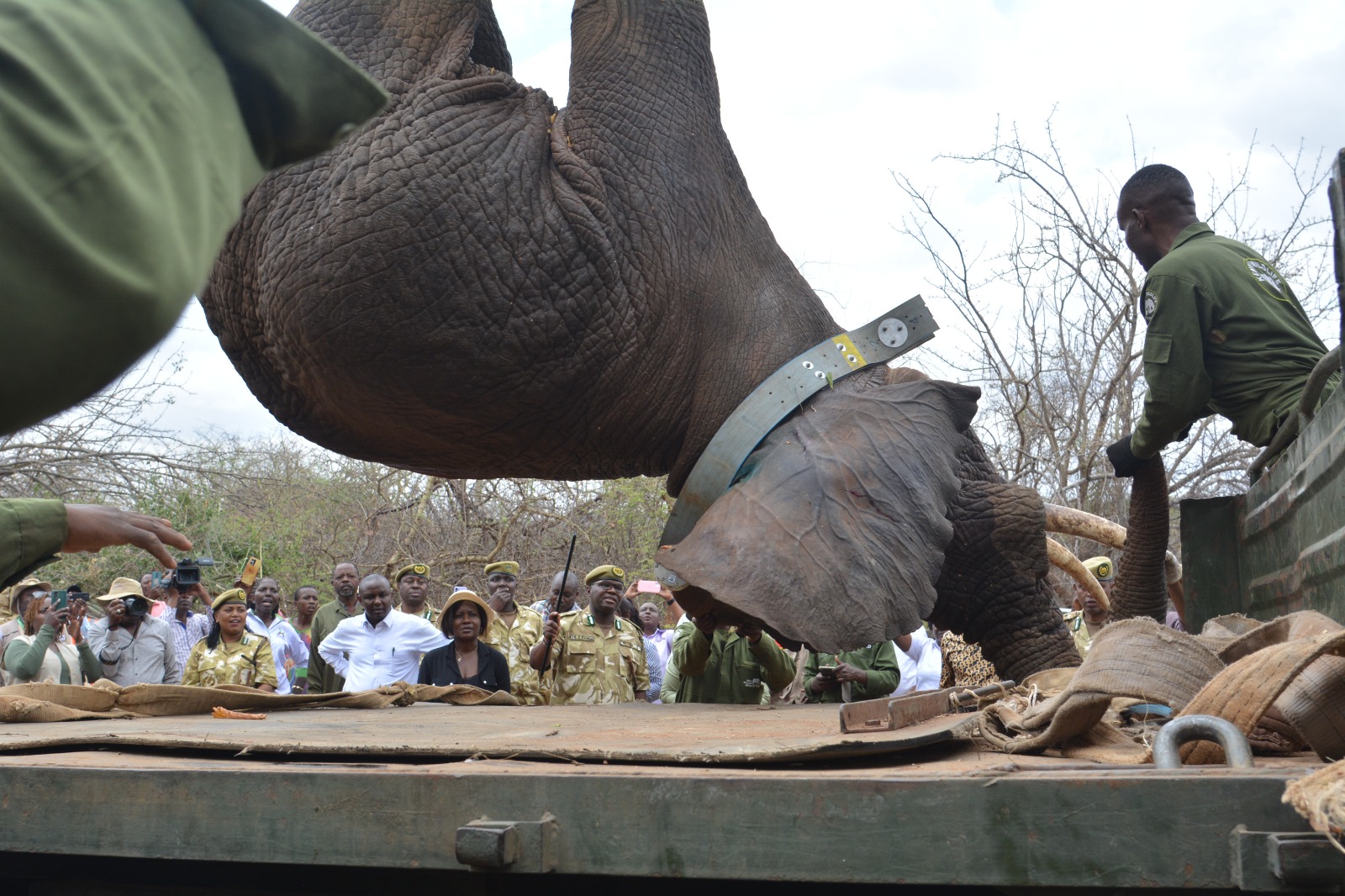The Kenya Wildlife Service (KWS) has launched a critical elephant translocation exercise aimed at moving around 50 elephants from Mwea National Reserve to Aberdare National Park.
This 17-day initiative underscores KWS’s commitment to wildlife conservation and addressing human-wildlife conflict.
The relocation has become necessary due to the growing elephant population in Mwea, which has risen from 49 individuals in 1979 to 156 today.
While this increase reflects successful conservation efforts, it has also led to ecological strain and conflict, with around 50 elephants venturing outside the reserve, causing property damage and endangering community livelihoods.
KWS’s approach to conservation has a long history, especially after Kenya’s devastating elephant population decline between 1979 and 1989, driven by a global demand for ivory.
The establishment of KWS led to a reversal of this trend, with the 2021 national wildlife census recording an elephant population of 36,280.
To ensure the long-term viability of elephant populations, KWS, along with stakeholders, developed the second edition of the National Elephant Action Plan (2023-2032).
This plan aims to maintain secure and healthy elephant populations, reduce human-elephant conflict, restore habitats, and enhance the economic value of elephants for local communities.
In addition to addressing immediate issues in Mwea, this translocation will boost the elephant population in Aberdare National Park, reducing competition for resources and supporting ecological balance in both reserves.
It also aims to minimize human-wildlife conflict and improve the socio-economic well-being of local communities, fostering coexistence.
A healthier elephant population in Aberdare is expected to expand ecotourism opportunities, benefiting local communities and promoting sustainable development.
Embu County Governor Cecily Mbarire praised the expertise and dedication of the KWS team, thanking KWS Director General Dr. Erustus Kanga for his visionary leadership in promoting human-wildlife coexistence.
The Governor also emphasized the importance of community participation in conservation efforts and suggested that KWS explore financial sustainability through safe translocation programs.
Tourism and Wildlife Cabinet Secretary Rebecca Miano highlighted the challenges posed by the growing human population encroaching on elephant rangelands.
She emphasized the long-term benefits of translocation, including boosting genetic diversity and safeguarding critical ecosystems.
Hon. Miano noted that this exercise is the largest of its kind in Kenya and called for regional and international cooperation in conserving the African elephant.
KWS Director General Dr. Erustus Kanga reiterated that the translocation aims to enhance both the welfare of the elephants and the socio-economic well-being of local communities.
He commended the multidisciplinary team involved in the operation, noting the gender parity among the staff and their dedication to ensuring a safe translocation process.
The translocation exercise is being carried out with adherence to IUCN guidelines and Kenya’s 2019 Translocation and Immobilization Protocol for African Elephants, ensuring the highest standards of safety for the animals involved.
This historic initiative aims to create a harmonious balance between wildlife and human needs while promoting conservation as a cornerstone of sustainable development.





